MyEtherWallet (MEW): A Mainstay of the Ethereum Blockchain (Review)
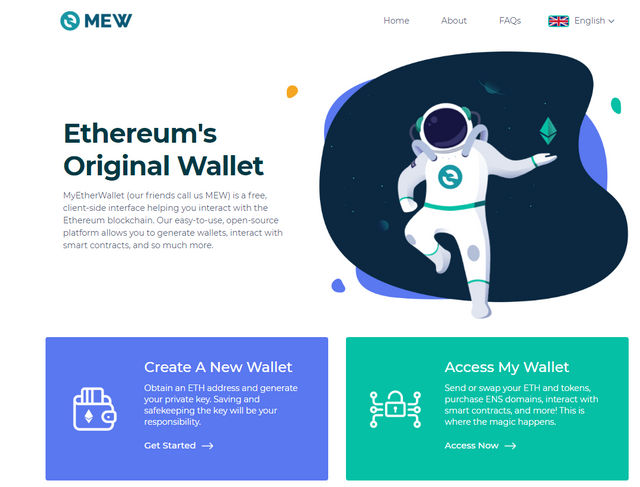 >
>Long before the existence of hardware wallets and browser plugins like MetaMask, we had MyEthereumWallet (MEW) which was THE way that most users would interact with the Ethereum (ETH) blockchain for all variety of transactions from the mundane transfer of funds to the more involved signing of smart contracts.
So, it feels quite strange to be writing another "first" review of an old warhorse of the Ethereum ecosystem. MyEtherWallet (MEW) can be found on the dApp ranking site State of the dApps which ranks dApps across multiple blockchains; currently MyEtherWallet stands at number 1667 in the complete listings which is more likely due to the fact that is a general purpose tool that has partly been surpassed by more specialised tools and it doesn't attract the same daily usage as other dApps would (such as gambling...).
Accessing your Ethereum address
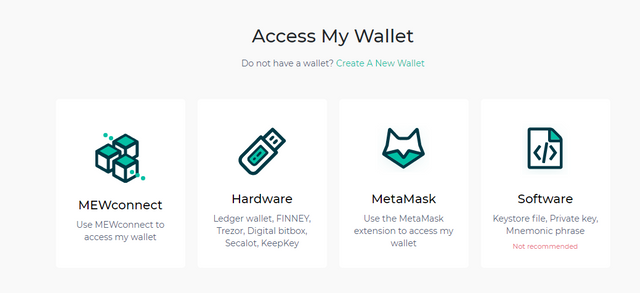
These days, I rarely use MyEtherWallet... preferring to use Metamask for daily usage. However, there are times when I need to do something slightly more involved, at these times, I use MyEtherWallet paired with a hardware wallet. However, it was nice to see that the website has had a nice facelift that makes it much more appealing to the eyes. The "traditional" interface is still available if you are emotionally attached to it, but the new interface is much much cleaner (I wish there was a dark mode...).
Something that I see often with newcomers to the crypto ecosystem is the misunderstanding of how funds are stored and accessed. MyEtherWallet does NOT store your funds or keypairs, they only provide an interface for interacting with the wallet that is unlocked by your private key. So, the login screen provides a number of alternatives for accessing your Ethereum wallet, ranging from relatively secure options (hardware wallets and to some extent Metamask) through to the hideously dangerous keystore/private key/seed phrase options (these should never be exposed to the internet if at all possible).
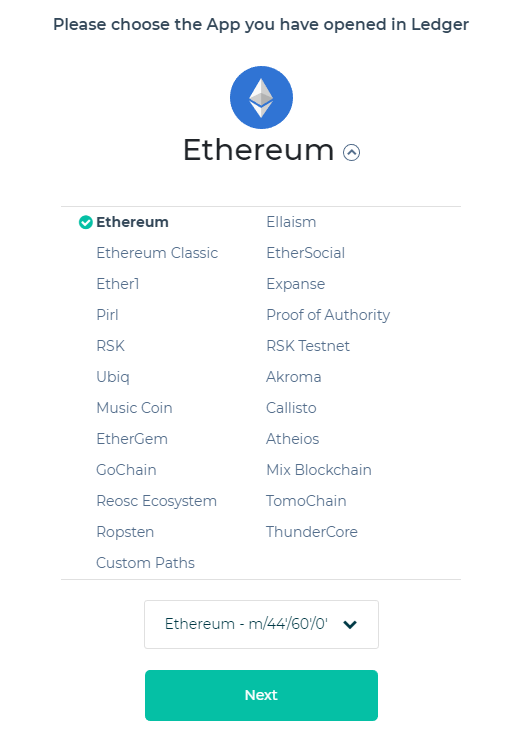
After selecting your preferred option for verification, you will need to select the particular Blockchain (most people will use only the Ethereum) that you want to interact with and the derivation path (don't touch unless you know what you are doing!). It was interesting to see that there are more Ethereum-based blockchains that are easily accesible through this interface now, making for an easier one stop shop for those blockchains that are based upon Ethereum but run different mainnets.
Wallet Function
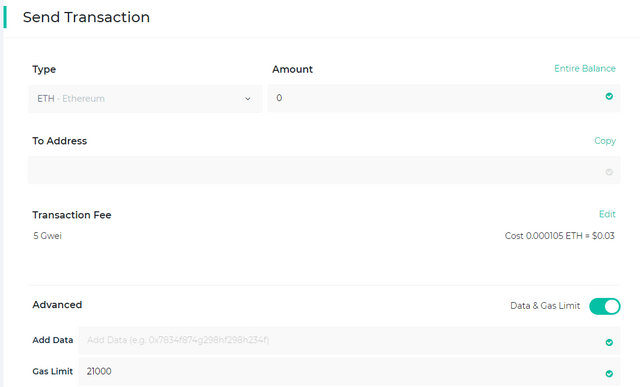
The wallet section is completely functional with the ability to be quite flexible with the various parameters of the transaction. From the dropdown menu on the top left (currently reading Ethereum), you can select all tokens that are dependent on the Ethereum blockchain, so that would be all ERC-20 based tokens and ERC-721 non-fungible tokens (NFTs, like our ever beloved CryptoKitties).
The usual requirements for an Ethereum transaction are clearly presented, recipient address and transaction/gas fees. By activating the toggle, you are also able to add metadata to the transaction and also change the gas limit (which will affect the speed of the tranaction by offering miners a higher or lower fee for block inclusion). As always, don't touch these unless you know what you are doing, you could accidentally overpay for your transaction or delay it by offering gas fees that are not in line with the current rates.
Additional functions
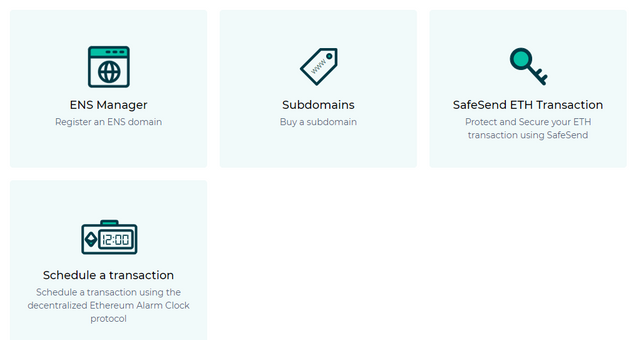
On this particular foray into MyEtherWallet, I looked into a few other corners of the dApp which I don't normally make use of. So, I was able to discover a few additional functions that I had not realised were available.
The first two options enable the ability to register and buy ENS domains and subdomains, which are basically human readable versions of Ethereum public keys. This is quite an important step towards the adoption of cryptocurrencies by the mainstream, hiding the more convoluted infrastructure (HEX based addresses) behind a human readable equivalent. This essentially functions in the same way that your brower (and the internet infrastructure behind it) can translate between the human readable web addresses and the DNS addresses used by machines. This ability to register a human readable address makes payments and address verification much easier for the mainstream public.
Another option (SafeSend) routes outgoing transactions to a smart contract which verifies that the recieving address is not a blacklisted address (known scammers/fraudsters). Always a useful tool if you are sending a transaction to an new address with no additional knowledge of the trustworthiness of that address (and the operater behind the wallet).
Finally, a scheduling option for recurring transactions. At the moment, the use case for this sort of function is limited. However, if cryptocurrencies gain more popularity and usage, then this recurring payment function imitates the recurring payments functions that are used by most banking and fiat institutions to deal with subscriptions such as Netflix or Dropbox.
Smart Contracts
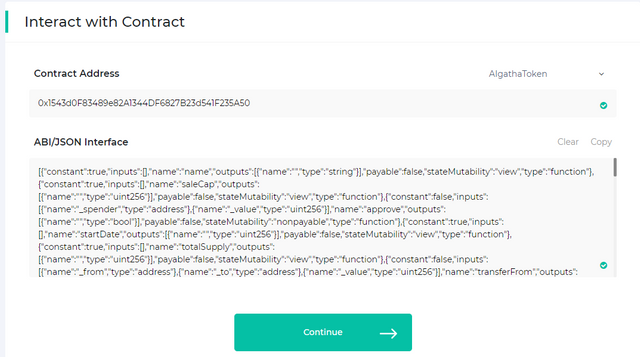
From the Smart Contracts section, you are able to interact with a wide variety of registered smart contracts. Most of these will be ICO contracts or smart-contracts that form the backbone of other dApps that operate upon the Ethereum blockchain. There is a dropdown menu on the right hand side that will list all the available contracts available to interact with. Most users are not likely to venture into this space, but it is a reflection of MyEtherWallet's focus on a complete Ethereum experience for all users (general public and developers).
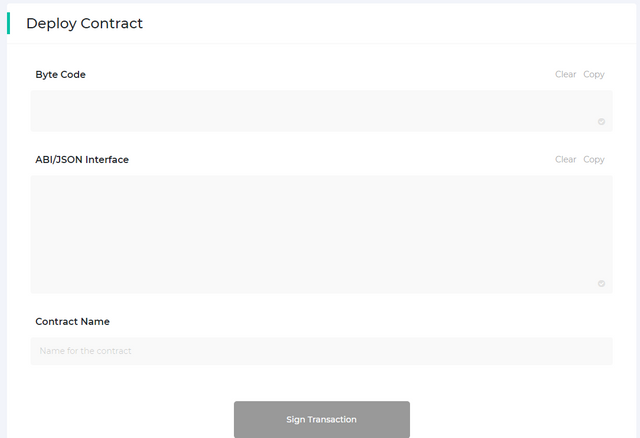
Whilst I personally have ventured into the contract interaction page a few times in the past... I have never had cause to deploy a contract myself! However, for those with the programming chops and the desire it is possible to deploy your own smart contract onto the Ethereum blockchain from the MyEtherWallet interface. I'm afraid I am completely at sea on this page though....
Message Signing
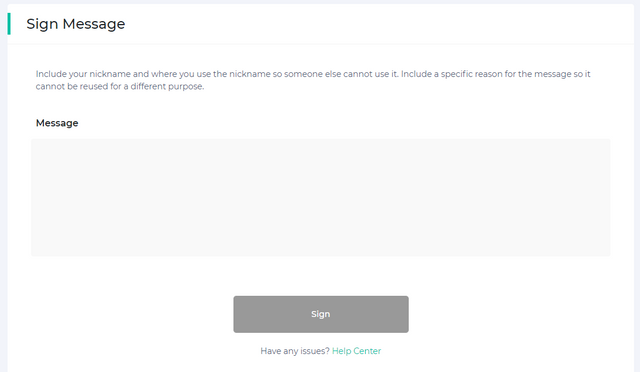
Lastly, there is the message signing section. This is an important page if you need to verify the ownership of a wallet. From here you can sign a message as proof that you have access to the wallet's private keys (and thus ownership). Likewise, it is possible from here to verify another account's signature (and thus ownership).
This function serves as cryptographic proof that the message originated from the owner of the account, which can be useful for verifying identity or ownership.
My Thoughts
MyEtherWallet has been a longstanding dApp in the Ethereum ecosystem and as such is one of the most trusted points of access and interaction for the Ethereum blockchain. After a large overhaul of the user facing side of the interface, I have to say that it is a much more pleasant experience to use in comparison to the highly functional but somewhat ugly "traditional" interface.
MyEtherWallet is the Swiss Army knife of Ethereum interfaces, in that it can pretty much do everything that a regular user and a more advanced user would want from an Ethereum tool. However, this jack of all trades focus is also a weakness, as there are dApps that are much more simplistic and easy for a regular user to make use of, at the cost of functionality. That said, I would argue that MyEtherWallet has found it's niche as a power user tool, there are other dApps that are already semi-established as currency wallet only applications and it would be a pity to see MyEtherWallet become what it is not.
Of course, with the functionality and purpose MyEtherWallet is aiming at, it does not make any sense to have a mobile application as there is no storage of private keys. However, for most of your interaction with MyEtherWallet you are likely to be doing transactions that are better performed and viewed on a proper computer anyway...
MyEtherWallet is a trusted and long time dApp on the Ethereum blockchain. In many ways, it does hark back to a time when crypto interfaces were even less friendly than they are now (interestingly enough, MyEtherWallet was one of the first non-CLI interfaces, making the interaction easier!) but since the overhaul of the website, it is also looking much more modern and cleaner whilst retaining all of it's core functionality. It still remains my go to dApp for all my interactions with the Ethereum blockchain that are more involved than what Metamask can handle.
I am not using any other blockchain other than Steem. And to be honest I don't get how other works. Your review seems simple and easy to understand. I have some interest on ethereum. Saving your post for future use! :)
If you use Ethereum, you will definitely come across this tool quite often!